
Character and uniqueness aren’t the exclusive domain of now-defunct Saab. Large auto manufacturers tend to be risk-averse, preferring the marketability of proven designs like midsize sedans, crossovers, and SUVs, but a few have defied convention.
Quirky cars demonstrate unconventional design and engineering traits but “quirky” doesn’t necessarily mean “good.” Keep that in mind as you peruse this short list of oddballs.
——————————————
Nissan Cube

The Cube stands out with its blocky profile, asymmetrical rear glass, and strange interior adorned with a shag mat and puddle-inspired roof. Unfortunately, its wheezy 4-cylinder CVT powertrain and sensitivity to crosswinds detracts from its enjoyability. It is, at least, quite cavernous inside, versatile and immensely practical.
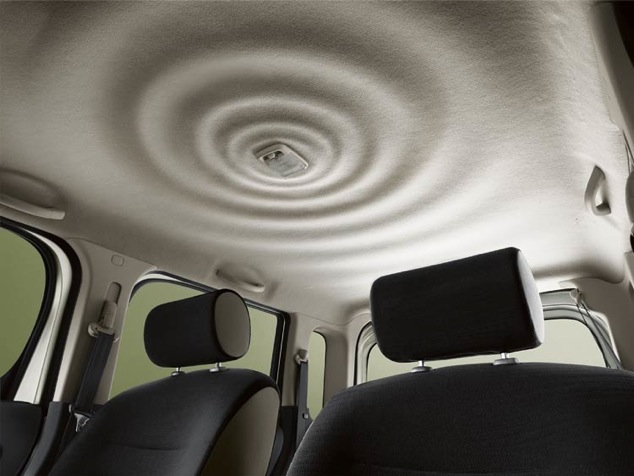
Unfortunately for Nissan, sales of the much-hyped Cube have slowed to a trickle in the United States.
——————————————
Fiat Panda
Fast Tube by Casper
Four doors, auto-engaging all-wheel drive, and 50mpg — it sounds like a concept for some kind of hybrid Jeep, but it isn’t. Fiat calls its petite 1900lb box the “Panda,” a delightfully contradictory name for a diminutive urban runabout. Thanks to its generous ground clearance, short overhangs, and short wheelbase, the Panda is an economy car with impressive capability in foul weather, even in light mud.
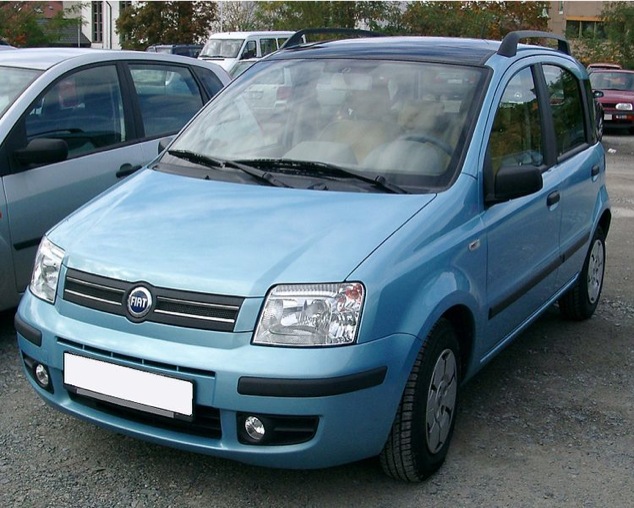
——————————————
Renault Megane
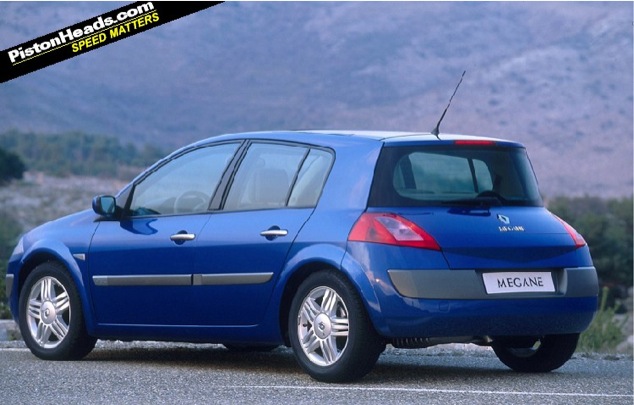
The 2002-2008 Megane (pronounced Meg-Ann) carries a distinctive shell that could only come from a French automaker. The C-pillar forms a sharp, almost 90-degree angle interrupted by a rear overhang that juts outward from underneath the rear glass. It’s design for design’s sake, unimpeded by the practicalities of cargo capacity and aerodynamics.
Top Gear’s Richard Hammond calls it “cutting edge cool.”
Fast Tube by Casper
Unfortunately, the third-generation Megane pictured below loses its crisp, artful styling in favor of an aerodynamic shape that’s similar to the new Ford Focus.

——————————————
Saturn S-Series
At GM, the only brand with a more loyal following than Oldsmobile was Saturn. Launched in the early 90s, the S-series was a glimpse of a plastic future. The darkened pillars and shark-like nose were awkward, yet appealing to people who appreciated the car’s dependability, frugality, and dent resistance. In the photo below, this 16 year old S-series has completely spotless doors and fenders, free of rust and shopping cart bruises.

It even had its own unique platform, bucking the trend at late 80s/early 90s GM when vehicle architectures and designs were shamelessly whored out from Chevrolet on up to Cadillac (remember the Cavalier-based Cimarron?). It was a crude practice disgracefully known as “badge engineering.”
The SL’s ergonomically friendly interiors were made of durable but hard plastic, lacking the fitment and refinement of the same-year Honda Civic, but they were a major step forward at GM for small cars. Unfortunately, the 1.9L I-4’s raucous engine intruded the cabin, loudly reminding drivers at every takeoff that they weren’t in a Cadillac.
In its early years, Saturn had thousands of dedicated fans who met annually at the Saturn plant in Spring Hill, TN to eat, meet, and interact with the people who designed and built their cars. Miraculously, stodgy General Motors found a way to cultivate a level of personal intimacy and loyalty with its customers that was unheard of in the auto industry. Saturn was, for a brief moment, the envy of Ford, Chrysler, and even Japan.
Unfortunately, Saturn’s successes were squandered. Service, sales, and manufacturing innovations were never applied to GM’s other divisions. The S-series trudged along for a decade with only a handful of cosmetic changes. When legions of happy customers were ready to upgrade to a larger car or SUV, GM was too little, too late with the introduction of the Vue and Aura. The plastic bodies were abandoned in favor of steel and Spring Hill started building Chevy Trailblazers. Saturn became yet another GM division, occupying an odd place between Chevrolet and Buick without the prestige of former Oldsmobile.
Ominously foreshadowing the decline of Saab and Pontiac, Saturn became a victim of corporate neglect and bureaucracy.
——————————————
Citroen 2CV
The fifth car on the list dates back to 1948 but remained in production through 1990, which qualifies it as being part of the modern era despite being otherwise completely antiquated. However, its long production run demonstrates the indefatigability of the 2CV’s original design.
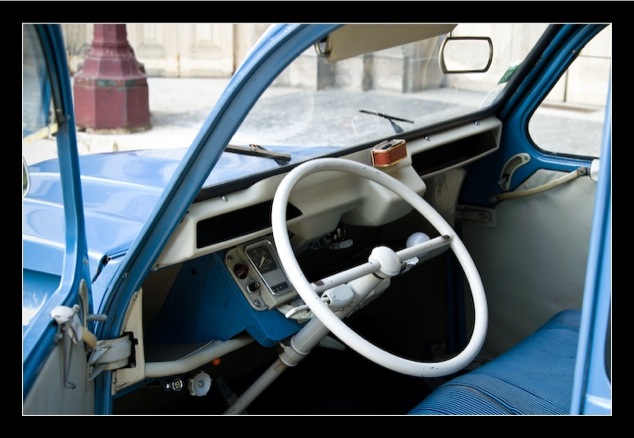
(http://snail.s4.bizhat.com/snail-post-4719.html)
The intent behind the 2CV was to move France’s commoners and peasants out of horses and buggies and into automobiles like the rest of the developed world. To satisfy those needs, the 2CV had to be durable, practical, simple, and cheap. That practicality entailed carrying eggs across a field without cracking them, an achievement made possible by its unique independent suspension.
Here’s an example of the 2CV’s egg-carrying capabilities:
Fast Tube by Casper
Windows flapped up instead of rolling to keep the doors thin, reduce weight, and reduce complexity. The attention to detail in the 2CV wasn’t in the panel fitment or paint quality, typical of how we evaluate modern cars. It was in the level of effort the designers went to in pursuit of simplification. Not one detail was overlooked.

To further improve reliability and simplify maintenance, the air-cooled 2CV was designed to operate without a distributor, radiator, thermostat, or water pump. The original flat-twin (two cylinder) 375cc engine produced nine horsepower. Displacement was eventually increased to 602cc with an output of 29hp, enough to move the 1200lb 2CV from 0-60 in half a minute. Lesser 2CVs were unable to exceed 45mph.
Seats were made of simple rods with hammock-like cushions draped over them, for easy care and quick manufacturing.
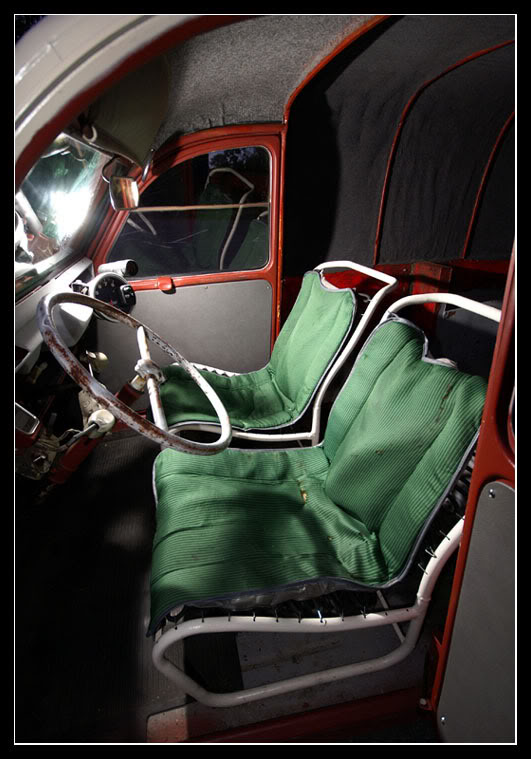
(http://snail.s4.bizhat.com/snail-post-4719.html)
The car’s flat steel side panels kept costs low and streamlined assembly. Despite ramping up production in the early 1950s, the 2CV was so popular that Citroen had a five-year waiting list.
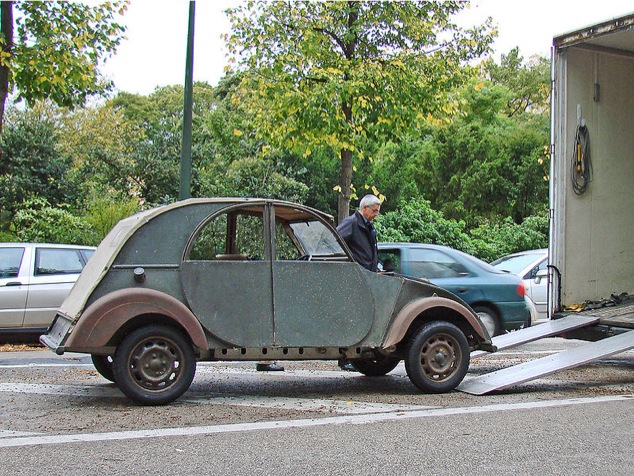

They were noisy and poorly insulated, crude and agricultural, but they rode surprisingly well. Unfortunately, their lack of power made them quite unpopular in Germany and the United States, where highway networks were rapidly expanding.
This is a demonstration of its off-road capabilities:
Fast Tube by Casper
Not surprisingly, Jeremy Clarkson hates it:
Fast Tube by Casper
Fast Tube by Casper
Like old Saabs, each of the 2CV’s glaring flaws are matched by one or two clever innovations, resulting in a quirky but practical car with more personality than a Jack Russell Terrier.
Of the five vehicles listed, I would own the Renault Megane or Citroen 2CV for their eye-catching designs and thoughtful engineering. Though the two cars are worlds apart in terms of technology, safety, performance, and modern day usability, both are standouts brimming with originality.
Not surprisingly, they happen to be French.
Megan and Cube= KILL IT WITH FIRE!
Weird that you should have something in here about the 2CV. I just read the history of them a few days ago. Really interesting cars, and I think that they look awesome. If they made more power, it’d be a fun country run-about.